★★★½
“Buffy does Britain.”
 Amy (Theobold) is insane. Or so the rest of society thinks, due to her being able to see things nobody else can. She’s trying to keep her head down, working quietly at a bowling alley. But after being attacked, she is rescued by Raquel (Wokoma), another young woman who can see exactly the same things. Amy learns from her new friend that demons are real, and live among us: Raquel has appointed herself a demon-hunter, and convinces the reluctant Amy to join her. This causes no end of issues, not the least of which is Amy’s room-mate becoming one of the possessed, and the most of which is likely the apocalyptic plan of Callum (Curran). He intends to use Raquel to open the gates of hell on Halloween, allowing thousands more demons to flood into our world and take over humans.
Amy (Theobold) is insane. Or so the rest of society thinks, due to her being able to see things nobody else can. She’s trying to keep her head down, working quietly at a bowling alley. But after being attacked, she is rescued by Raquel (Wokoma), another young woman who can see exactly the same things. Amy learns from her new friend that demons are real, and live among us: Raquel has appointed herself a demon-hunter, and convinces the reluctant Amy to join her. This causes no end of issues, not the least of which is Amy’s room-mate becoming one of the possessed, and the most of which is likely the apocalyptic plan of Callum (Curran). He intends to use Raquel to open the gates of hell on Halloween, allowing thousands more demons to flood into our world and take over humans.
It is, very clearly, inspired by Buffy in many aspects, from its blonde heroine, through the “Scooby Gang” of friends in assistance, such as long-suffering bowling-alley colleague, Jake (Reeves), who carries a torch for Amy and likes canoeing. On the villainous side, Callum also seems to owe a particularly large debt to the Mayor of Sunnydale (though in our house, Curran will always be Van Gogh from Doctor Who!). However, it’s almost fourteen years since Buffy Summers rode off into the sunset, so I guess the statute of limitations has run out there. Another potential inspiration could be a distaff version of Supernatural, but there’s still plenty here that’s fresh and fun, and it has a particularly British approach
For instance, it’s laden with sarcastic banter, as well as (for those who might be offended) plenty of harsh language and general crudity – an exorcism, for instance, requires a very special shower for the target… If somewhat lacking in originality, the dynamic between the two leads helps make up for this; it’s likely the show’s strongest suit, and overcomes most of the scripting flaws. Amy and Raquel are each outsiders in their own ways, who can mesh together into an effective whole. One possesses better social skills, and can hold down a job, so is able to interface with other people if necessary; while the other has superior knowledge about what’s going on, in part thanks to her “special” background. Though both are quite happy to resort to a more physical approach when necessary – and, given who they’re facing, that would be quite often.
It’s all over remarkably quickly, especially if you are more used to American series, typically lasting 20+ editions a season. This only takes six 45-minute episodes to go from introducing the characters to the eve of the apocalypse. It is perhaps a good thing, as the story written by creator Howard Overman is somewhat thin, and could potentially feel stretched if told at any greater length. Instead, you will likely be left wanting more, and that’s never a bad position for the audience to be in, at the end of a show’s first season.
Dir: Al Mackay and Declan O’Dwyer
Star: Cara Theobold, Susan Wokoma, Lewis Reeves, Tony Curran





 Like much horror, the rape-revenge genre is one which overlaps with, rather than being wholly encompassed by, the action-heroine field. Some entries qualify: the awesome glory which is Ms. 45 being the most obvious example. But others appear to focus more on the rape than the revenge, and are far less interesting as a result. Such was the case for the first two entries in this series – and, indeed, the 1978 grindhouse classic which it rebooted. Here, however, in an interesting twist we bypass the assault entirely. This starts instead with the victim in the earlier movies (Butler) having adopted a new identity, that of Angela, and attending both one-on-one therapy as well as group sessions.
Like much horror, the rape-revenge genre is one which overlaps with, rather than being wholly encompassed by, the action-heroine field. Some entries qualify: the awesome glory which is Ms. 45 being the most obvious example. But others appear to focus more on the rape than the revenge, and are far less interesting as a result. Such was the case for the first two entries in this series – and, indeed, the 1978 grindhouse classic which it rebooted. Here, however, in an interesting twist we bypass the assault entirely. This starts instead with the victim in the earlier movies (Butler) having adopted a new identity, that of Angela, and attending both one-on-one therapy as well as group sessions.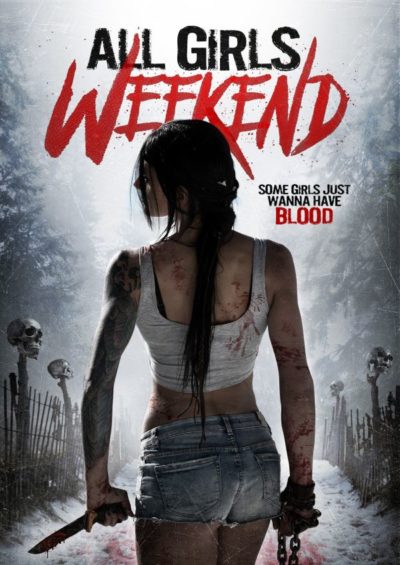 There’s something admirable about a film entirely cast with and directed by women, especially in such a generally male-dominated genre as horror. Unfortunately, all this effort really goes to prove, is that the fairer sex are every bit as capable of turning out uninteresting crap as any man. An ill-conceived cross between The Descent and The Blair Witch Project, this has four old school friends reuniting, along with the workmate of one of them, who tags along because… Well, as with so much in the movie, for no particularly good reason. There’s friction between the friends, from the moment Nancy (Bernadette) shows up four hours late, forcing their departure to be pushed back.
There’s something admirable about a film entirely cast with and directed by women, especially in such a generally male-dominated genre as horror. Unfortunately, all this effort really goes to prove, is that the fairer sex are every bit as capable of turning out uninteresting crap as any man. An ill-conceived cross between The Descent and The Blair Witch Project, this has four old school friends reuniting, along with the workmate of one of them, who tags along because… Well, as with so much in the movie, for no particularly good reason. There’s friction between the friends, from the moment Nancy (Bernadette) shows up four hours late, forcing their departure to be pushed back.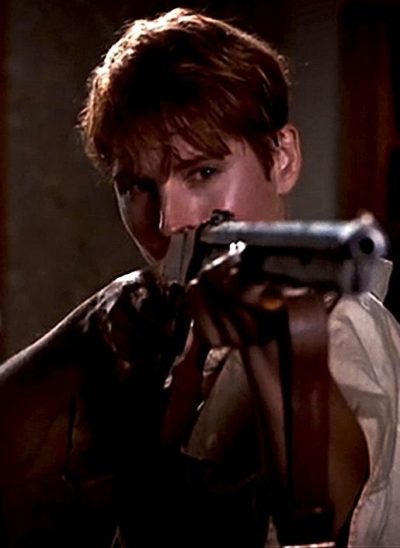 Important to note the year here, because the original Night of the Living Dead, for all its massive influence (without it, there’d be no The Walking Dead or World War Z) was very, very far from an action heroine film. Though it started off focusing on its female lead, Barbara, after she reaches sanctuary in the farmhouse, she spends virtually the rest of the movie in a near-catatonic state, and the film switches focus to Ben, who becomes the film’s hero. The change for this remake is one of a number of alterations, which are likely both necessary and helpful: when you are redoing a film widely regarded as a classic, you’d better bring something new to the party. That’s something largely forgotten by many horror remakes.
Important to note the year here, because the original Night of the Living Dead, for all its massive influence (without it, there’d be no The Walking Dead or World War Z) was very, very far from an action heroine film. Though it started off focusing on its female lead, Barbara, after she reaches sanctuary in the farmhouse, she spends virtually the rest of the movie in a near-catatonic state, and the film switches focus to Ben, who becomes the film’s hero. The change for this remake is one of a number of alterations, which are likely both necessary and helpful: when you are redoing a film widely regarded as a classic, you’d better bring something new to the party. That’s something largely forgotten by many horror remakes.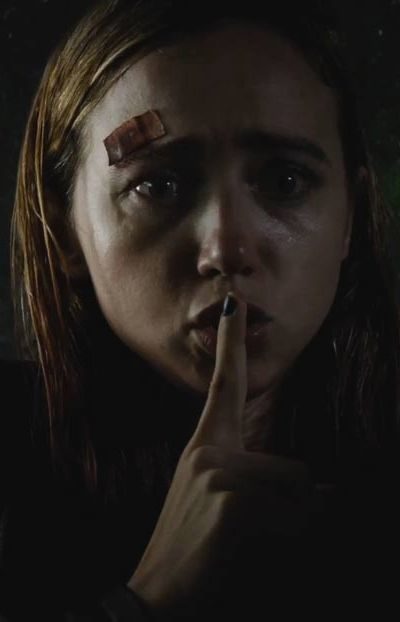 There is a time when a film-maker needs to fall out of love with their script, and approach the resulting movie with a cold, critical eye, analyzing every scene with a single question in mind: Is it essential to the story being told? And if the answer isn’t “Yes”, then the scene needs to be ruthlessly excised. If you don’t, then what results is this film, where a good idea, which could have been lean, mean survival horror at its most stripped-down, becomes instead a cumbersome exercise in social drama.
There is a time when a film-maker needs to fall out of love with their script, and approach the resulting movie with a cold, critical eye, analyzing every scene with a single question in mind: Is it essential to the story being told? And if the answer isn’t “Yes”, then the scene needs to be ruthlessly excised. If you don’t, then what results is this film, where a good idea, which could have been lean, mean survival horror at its most stripped-down, becomes instead a cumbersome exercise in social drama.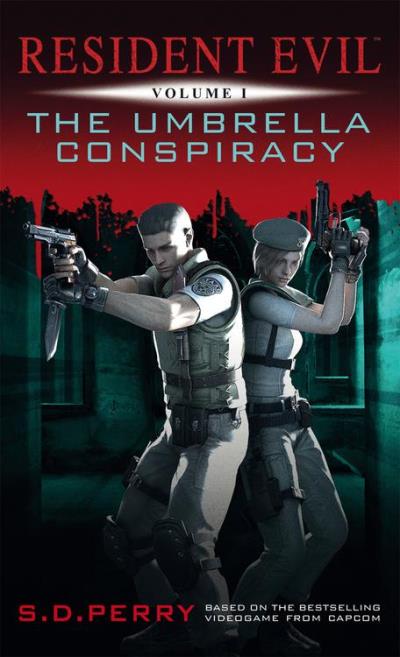
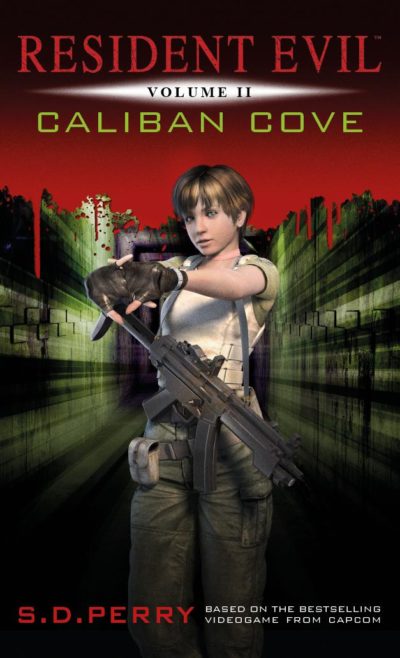
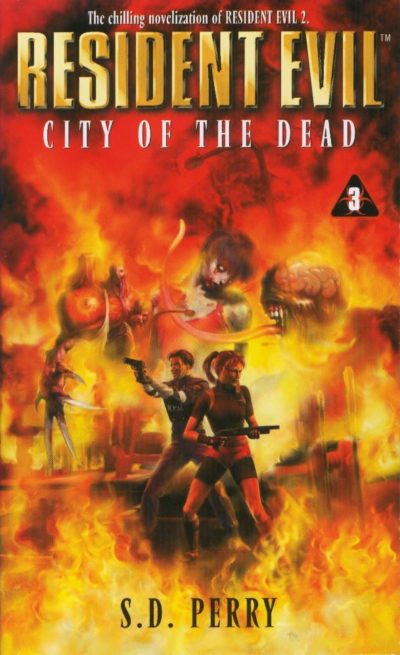

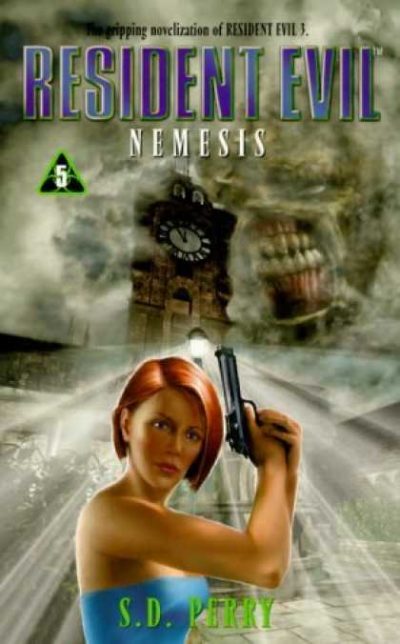
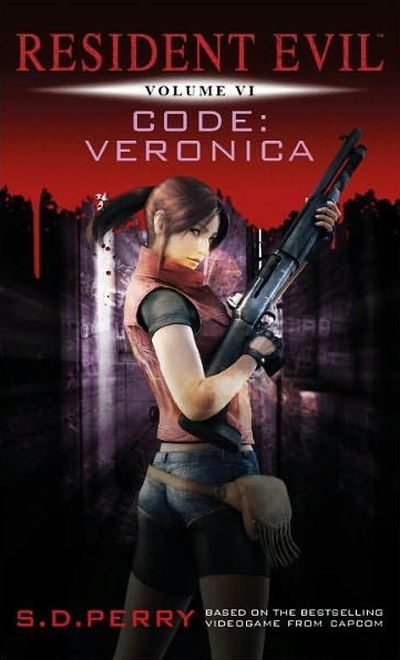
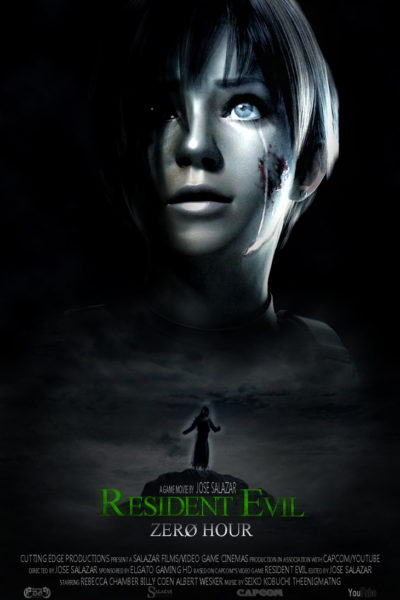
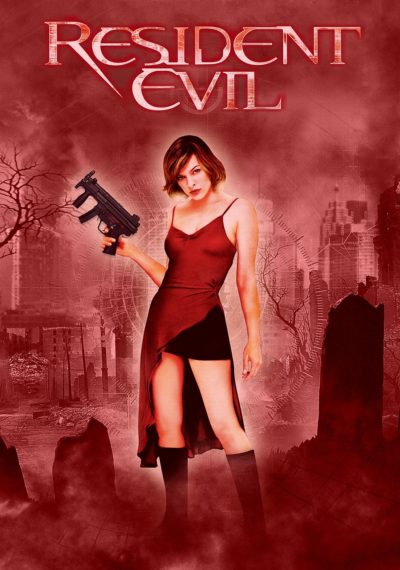 Resident Evil (2002)
Resident Evil (2002)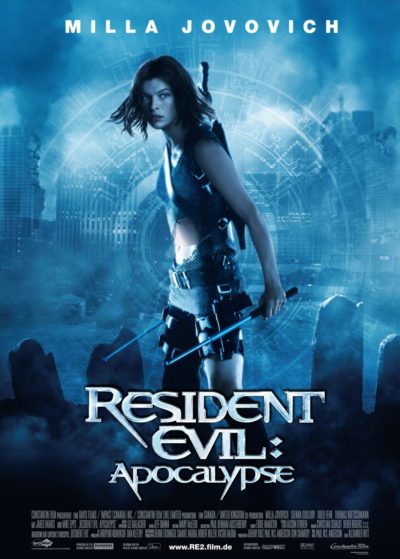 Resident Evil: Apocalypse (2004)
Resident Evil: Apocalypse (2004)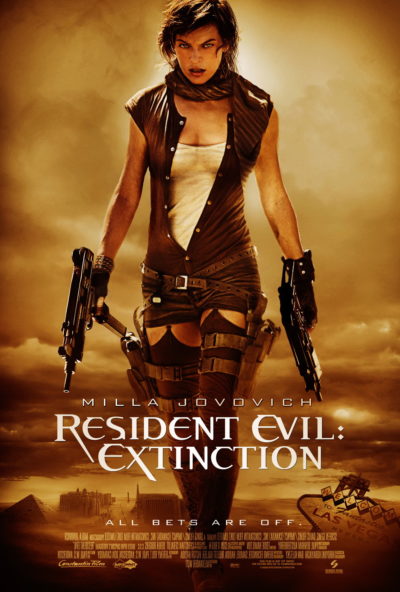 Resident Evil: Extinction (2007)
Resident Evil: Extinction (2007) Resident Evil: Afterlife (2010)
Resident Evil: Afterlife (2010)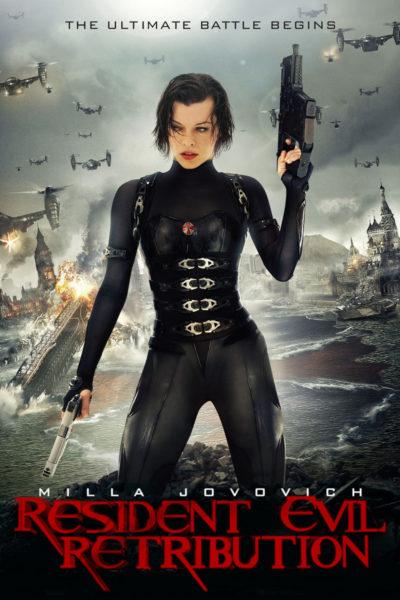 Resident Evil: Retribution (2012)
Resident Evil: Retribution (2012) We’d skipped the last two installments at the movies, having been burned by part three, but after the excellent content of #5, and since this was likely to be our last chance, Chris and I made it a “dinner and a movie” thing on Saturday. Was disturbed by how many kids there were for this R-rated film – hell, even a couple of babes in arms, whom I’m sure loved the non-stop violence. I guess it was deemed kid-friendly by their parents, with this one getting its MPAA rating just “
We’d skipped the last two installments at the movies, having been burned by part three, but after the excellent content of #5, and since this was likely to be our last chance, Chris and I made it a “dinner and a movie” thing on Saturday. Was disturbed by how many kids there were for this R-rated film – hell, even a couple of babes in arms, whom I’m sure loved the non-stop violence. I guess it was deemed kid-friendly by their parents, with this one getting its MPAA rating just “

















 The Milla Jovovich series are not the only films set in the Resident Evil universe. There have also been two feature-length computer animated movies: Degeneration was released in 2008, and Damnation four years later. A third, Vendetta, is scheduled to be released in Japan this spring. While made in Japan, with a Japanese director and crew, the voice cast are English-speaking. As with the novels, the stories and characters are in line with the universe of the computer games, rather than the live-action features, and tend to occupy spots in the timeline between the entries in the game series. Therefore, there’s no Alice, but the animated films contain their fair share of strong heroines and, of course, action.
The Milla Jovovich series are not the only films set in the Resident Evil universe. There have also been two feature-length computer animated movies: Degeneration was released in 2008, and Damnation four years later. A third, Vendetta, is scheduled to be released in Japan this spring. While made in Japan, with a Japanese director and crew, the voice cast are English-speaking. As with the novels, the stories and characters are in line with the universe of the computer games, rather than the live-action features, and tend to occupy spots in the timeline between the entries in the game series. Therefore, there’s no Alice, but the animated films contain their fair share of strong heroines and, of course, action.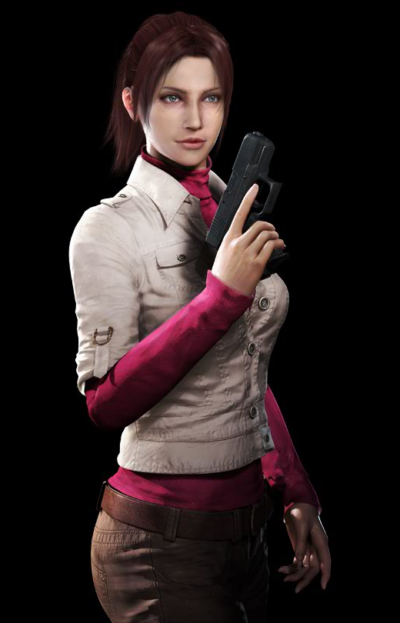 There’s a new EvilCorp in town, and its name is WilPharma, as we learn during the montage of news stories which opens this. In game terms, the film takes place after the events of “Resident Evil 4”, which saw the dismantling of the Umbrella Corporation. Its assets and research naturally proved too valuable to destroy, and WilPharma has taken over, with the announced goal of developing a vaccine for the troublesome T-virus. However, some dubious medical research in India leads to the company being targeted by protestors from TerraSave. It’s one such demo, at the Harvardville Airport, that kicks things off, as a plane of infected subjects crashes into the terminal, where Senator Davis is trying to avoid the protestors. TerraSave’s Claire Redfield (Court) finds herself trapped with the Senator, before they’re rescued by a team of soldiers including Angela Miller (Bailey) and Leon S. Kennedy (Mercier).
There’s a new EvilCorp in town, and its name is WilPharma, as we learn during the montage of news stories which opens this. In game terms, the film takes place after the events of “Resident Evil 4”, which saw the dismantling of the Umbrella Corporation. Its assets and research naturally proved too valuable to destroy, and WilPharma has taken over, with the announced goal of developing a vaccine for the troublesome T-virus. However, some dubious medical research in India leads to the company being targeted by protestors from TerraSave. It’s one such demo, at the Harvardville Airport, that kicks things off, as a plane of infected subjects crashes into the terminal, where Senator Davis is trying to avoid the protestors. TerraSave’s Claire Redfield (Court) finds herself trapped with the Senator, before they’re rescued by a team of soldiers including Angela Miller (Bailey) and Leon S. Kennedy (Mercier).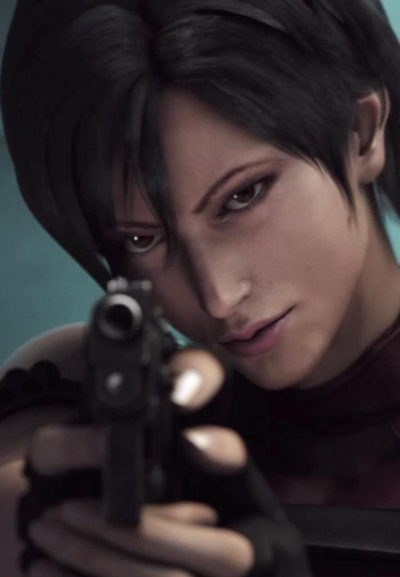 Included here largely for completeness, since the action heroine content likely would fall a little short of qualification on its own. Not that it’s entirely lacking, as the video at the bottom shows. But it’s definitely more a vehicle for Leon S. Kennedy (Mercer/Dorman). Which brings me to one of the odd things here: that is not a typo, it’s a double-credit for the character, because two different actors played the role, one providing the voice, the other the source for the motion-captured animation. Not sure I’ve seen that before.
Included here largely for completeness, since the action heroine content likely would fall a little short of qualification on its own. Not that it’s entirely lacking, as the video at the bottom shows. But it’s definitely more a vehicle for Leon S. Kennedy (Mercer/Dorman). Which brings me to one of the odd things here: that is not a typo, it’s a double-credit for the character, because two different actors played the role, one providing the voice, the other the source for the motion-captured animation. Not sure I’ve seen that before. At this point, five movies into the franchise, it probably becomes churlish to complain about the aspects that have sustained the series thus far. You’re watching an epic war, waged down the centuries, between vampires and werewolves. It is, literally, non-sense. This, however, is separate and independent from any entertainment value, and despite some issues, this is perhaps the best in the series since the original [some may argue for the third entry, but that appears to have strayed in from a different franchise entirely, containing only peanut-allergy level traces of Selene].
At this point, five movies into the franchise, it probably becomes churlish to complain about the aspects that have sustained the series thus far. You’re watching an epic war, waged down the centuries, between vampires and werewolves. It is, literally, non-sense. This, however, is separate and independent from any entertainment value, and despite some issues, this is perhaps the best in the series since the original [some may argue for the third entry, but that appears to have strayed in from a different franchise entirely, containing only peanut-allergy level traces of Selene].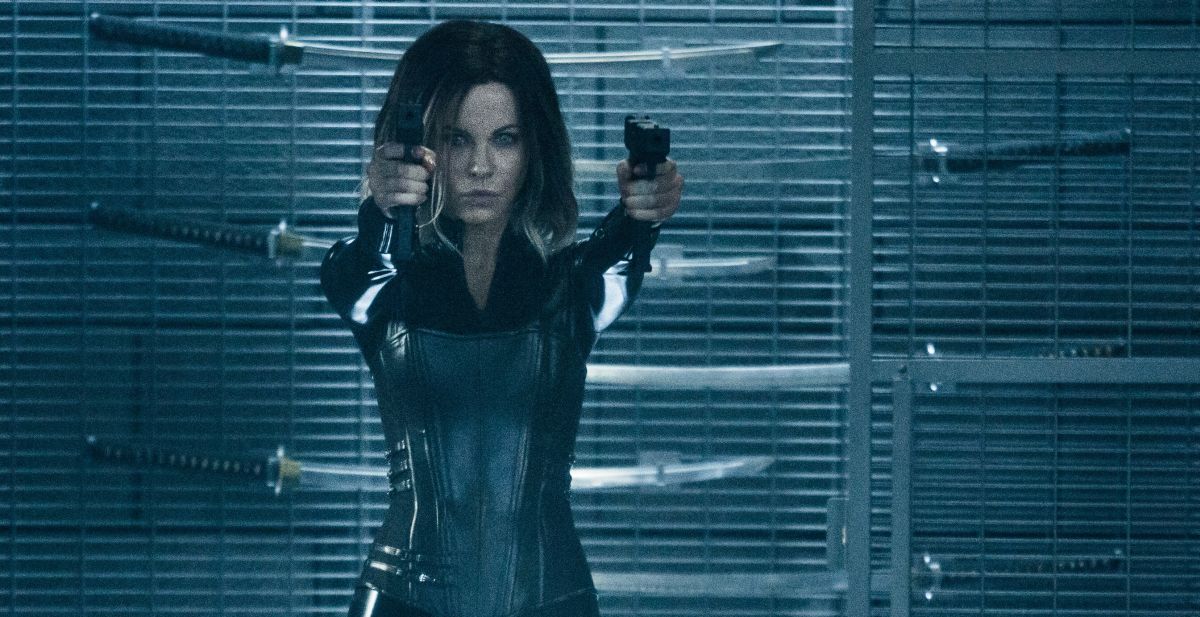 On the plus side, we get a couple of bonus strong female characters. Lara Pulver makes a good impression as the scheming vampire, and Clementine Nicholson does a fine imitation of a low-rent Emilia Clarke, playing the Nordic Coven’s leading warrior, Lena (maybe another GoT nod in that name?). On the downside, the CGI werewolves still look awful, particularly during their transformations, and there’s another (sigh) vampire-werewolf romance, which works out as well as they always do i.e. not very. You’d think people would have learned by now. Then again, this is a universe where Kate Beckinsale is basically the same as she was in 2003 when the first film came out, and is still capable of kicking ass while being easy on the eye.
On the plus side, we get a couple of bonus strong female characters. Lara Pulver makes a good impression as the scheming vampire, and Clementine Nicholson does a fine imitation of a low-rent Emilia Clarke, playing the Nordic Coven’s leading warrior, Lena (maybe another GoT nod in that name?). On the downside, the CGI werewolves still look awful, particularly during their transformations, and there’s another (sigh) vampire-werewolf romance, which works out as well as they always do i.e. not very. You’d think people would have learned by now. Then again, this is a universe where Kate Beckinsale is basically the same as she was in 2003 when the first film came out, and is still capable of kicking ass while being easy on the eye.